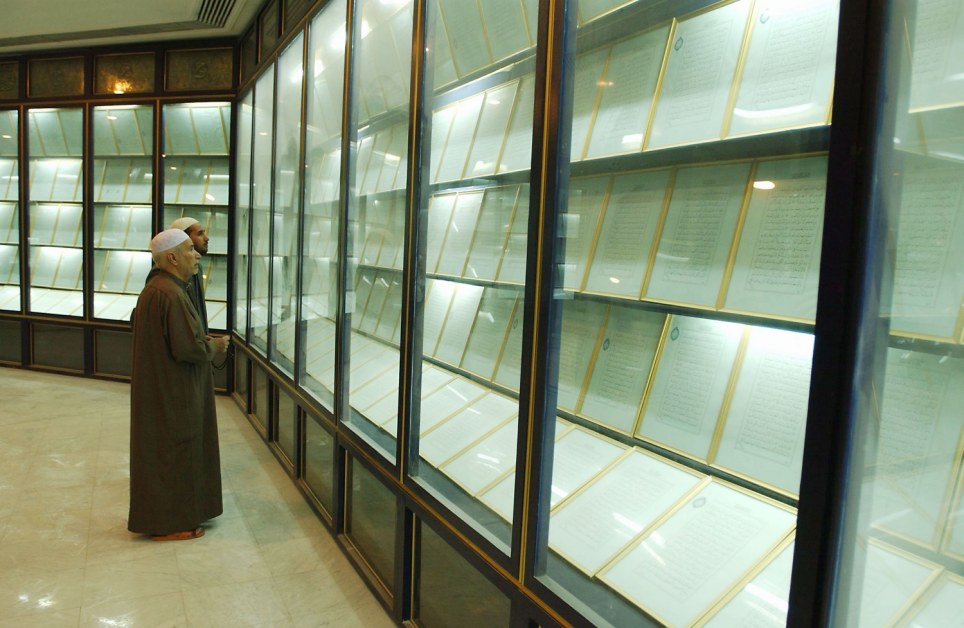Saddam’s Koran

Saddam Hussein, by many accounts, was a megalomaniac. As a testament to his own greatness, Hussein erected more than 300 palaces across Iraq and dozens of statues — of himself — throughout the country, during his 25 year reign. (Famously, in April of 2003, American soldiers toppled the statue in Baghdad.)
But for all of Hussein’s egotistical endeavors, perhaps not were more outlandish than his copy of the Koran (right) — written over the course of two years, using over two dozen pints of his own blood.
Hussein began work on the Koran in the late 1990s, conscripting a nurse and a calligrapher to create the now-controversial relic. Numbering 605 pages long, the security around the book is significant. It remains in a vault behind three locked doors. Each door’s key is held by a different person: one, controlled by the head of Iraq’s Sunni Endowment Fund; another by the Baghdad police chief; and a third, by someone unknown to the public. The reason for the security? A years-long debate as to whether to destroy the book.
The book’s fate is at debate for a number of reasons. On the one hand, while ostensibly a holy book, most Sunni leaders believe that using blood as ink is forbidden, and the book itself an affront to God; they fear divine retribution for keeping it intact. Second, there is a general unease about relics which aggrandize the status of Saddam, as evidenced by the wholesale removal and destruction of his statues. But on the other hand, as a former Iraqi national security adviser points out, “[Saddam Hussein] was a part of our history. He was a bad part of our history, but he made a huge difference, whether we like it or not. We need not bury the legacy of that period. We need to remember it, all what is bad and what is good and learn lessons. And the most important lesson is that dictatorship should not return to Iraq.”
And nothing quite captures Hussein’s maniacal legacy as his Koran written with his blood.
Bonus fact: According to the American Red Cross, when one donates blood, he or she typically givesabout one pint. The Red Cross further notes that U.S. regulations require a 56 day waiting period between donations. At that rate, it would take nearly four years to safely donate the 24 ounces of blood Hussein had extracted in half that time.
From the Archives: Qaddafi’s Bodyguards: Another odd quirk from a deposed Middle Eastern dictator.

Leave a comment